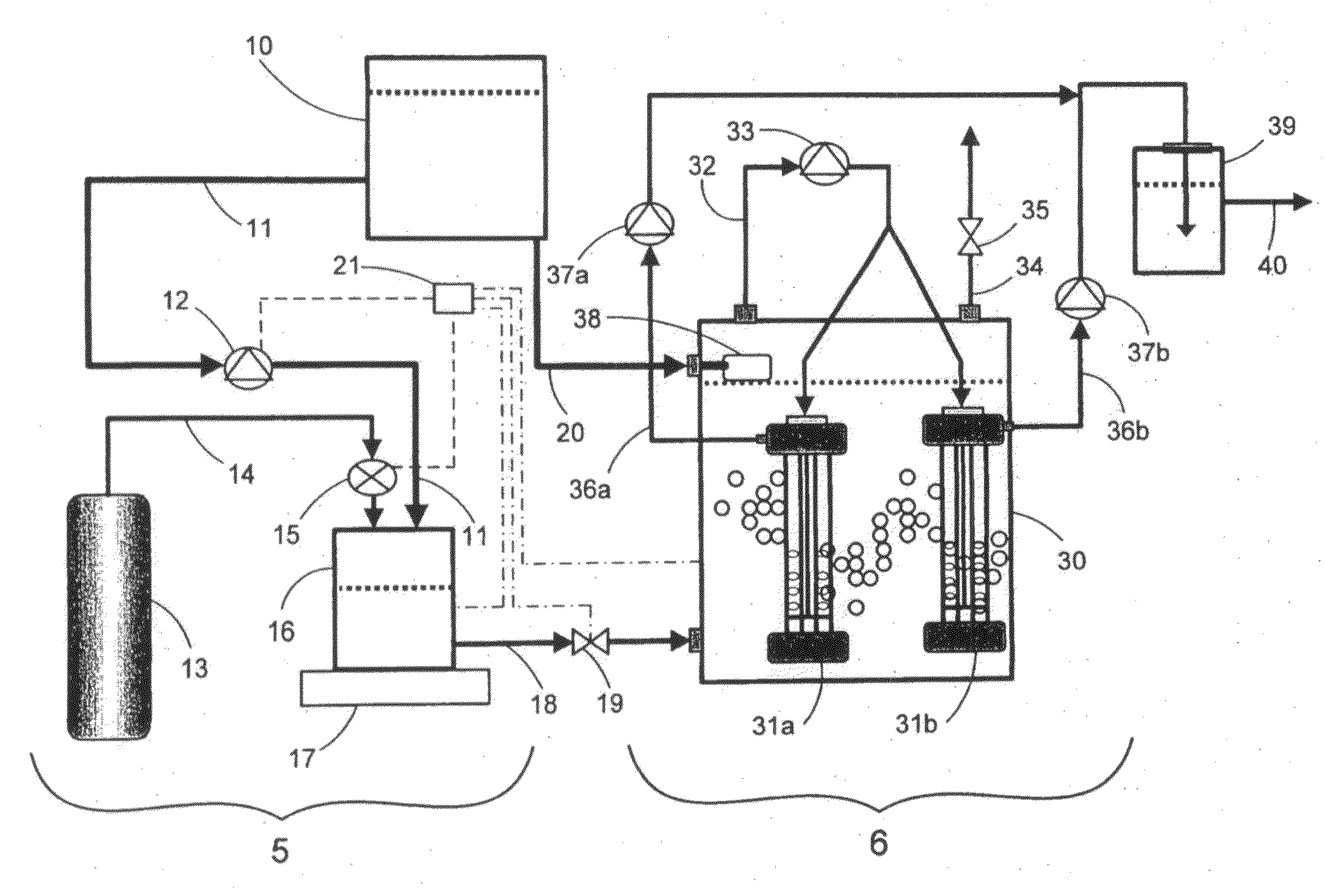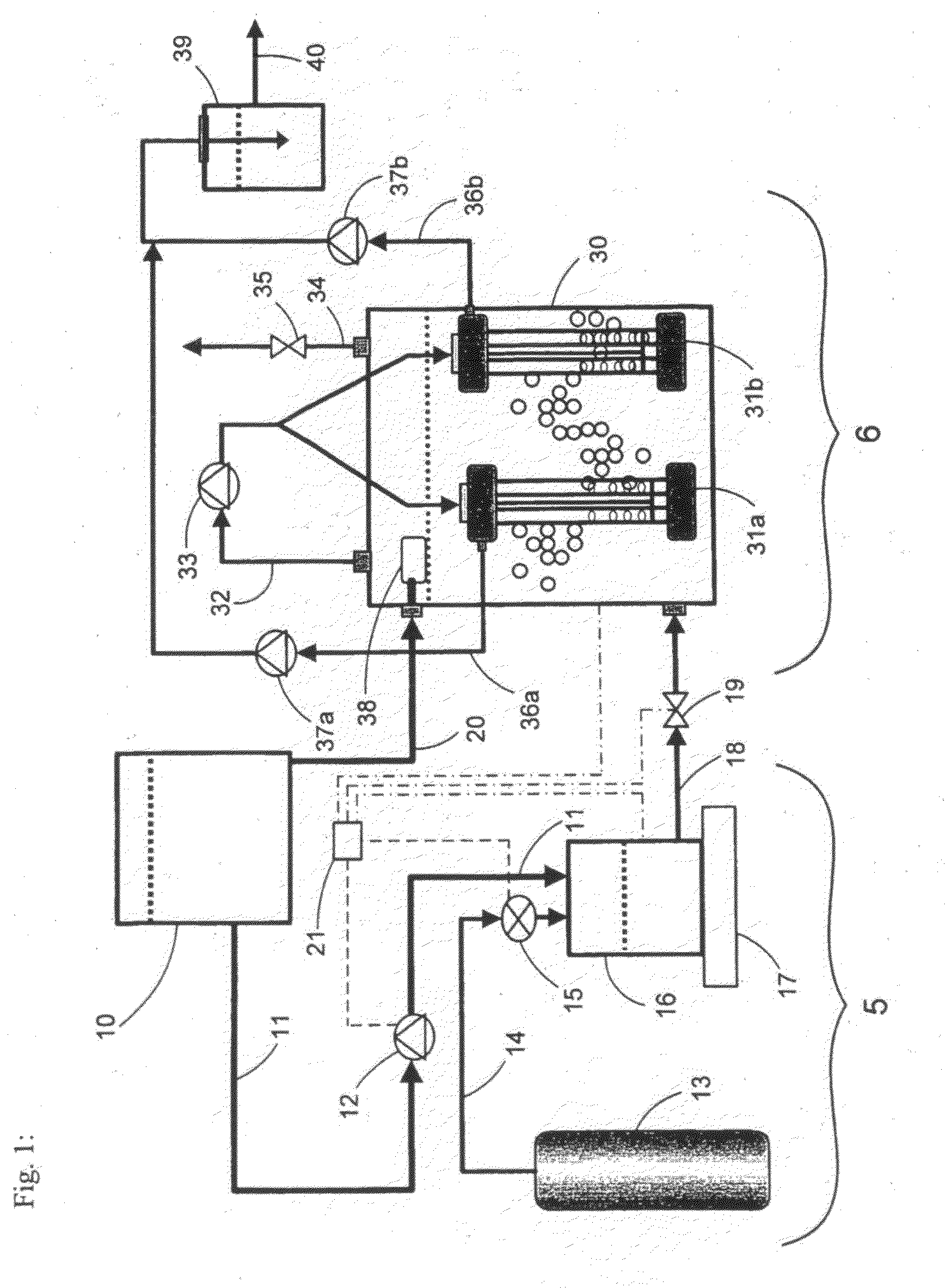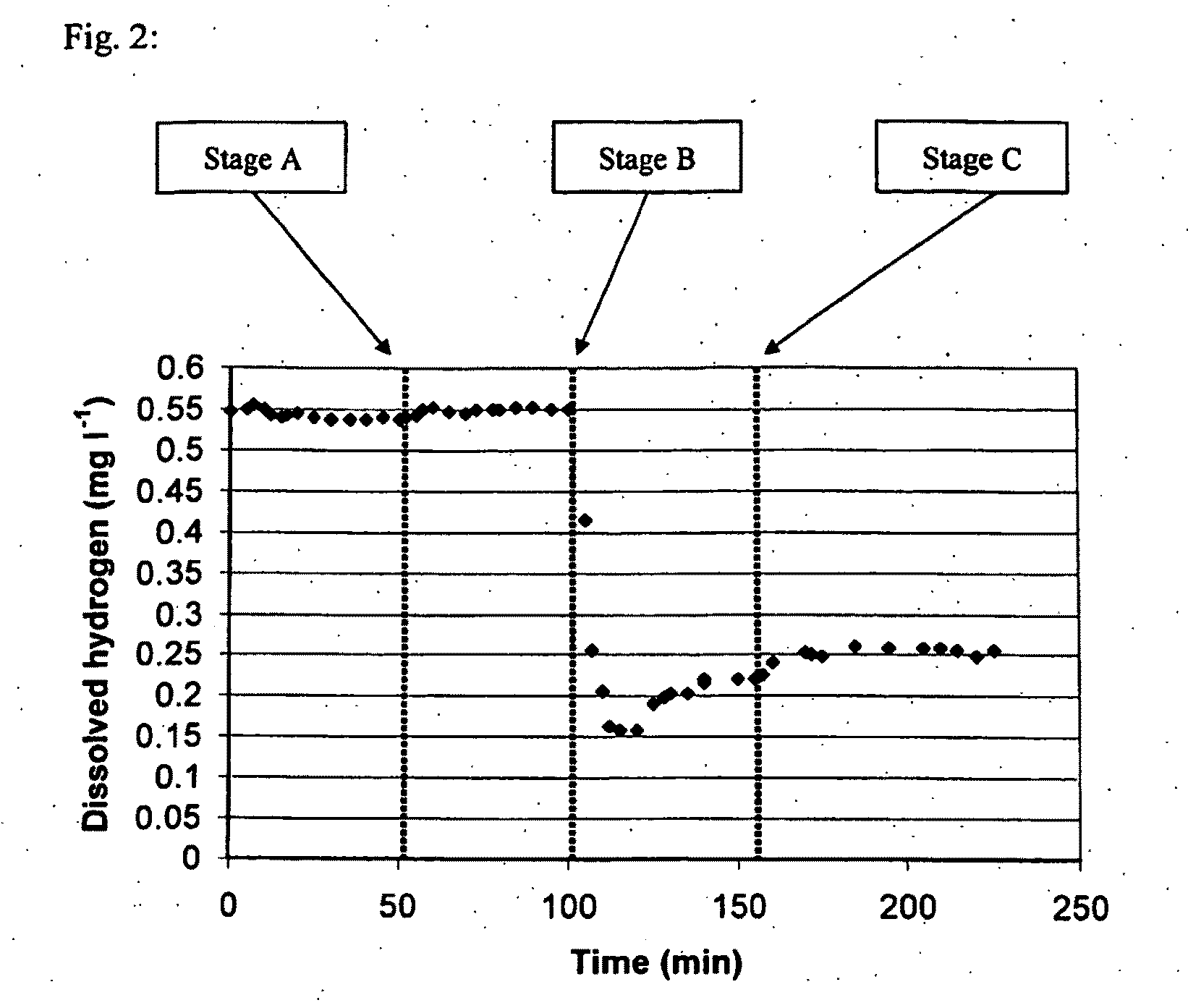Bubble-Less Gas Delivery Into Liquid Systems
a gas delivery and liquid technology, applied in water/sludge/sewage treatment, water treatment parameter control, mixers, etc., can solve the problems of increasing the input treatment cost associated with the addition of organic carbon donor substrates, nitrate contamination of water systems, and numerous significant problems
- Summary
- Abstract
- Description
- Claims
- Application Information
AI Technical Summary
Benefits of technology
Problems solved by technology
Method used
Image
Examples
example 1
[0041]An experiment using the preferred embodiment of the present invention illustrated in FIG. 1 was conducted to assess the mass transfer of hydrogen gas from supersaturated water released from the saturation mixing tank 16 into unsaturated water contained within the bioreactor unit 6. Pure water contained in storage tank 10 was pumped into the bioreactor vessel 30 after which, the headspace in the bioreactor vessel 30 was filled with nitrogen gas. Hydrogen gas was released from the gas cylinder 13 into the gas saturation mixing tank 16 until a pressure of 120 psi was reached. Then, water was pumped from the storage tank 10 into the gas saturation mixing tank 16 at a flow rate of 37 mL / min and was continuously mixed by agitator 17. The working pressure of outflow regulator valve 19 interconnected with liquid outflow line 18 was adjusted to 125 psi thereby maintaining pressure within the gas saturation mixing chamber at 125 psi. Hydrogen-saturated water was then controllably introd...
example 2
[0043]An experiment using the preferred embodiment of the present invention illustrated in FIG. 1 was used to assess denitrification of a high-nitrate synthetic wastewater. The synthetic wastewater was prepared by dissolving 25 mg L−1 NO3—N, 1000 mg L−1 NaHCO3, 25 mg L−1 KH2PO4, 5 mg L−1 CaCl2, 25 mg MgSO4.7H2O and 1 mg L−1 FeSO4 in pure water. The storage tank 10 and the bioreactor vessel 30 were filled with the synthetic wastewater while the gas saturation mixing tank 16 was filled with hydrogen gas from gas cylinder 13 until the pressure inside tank 16 was 120 psi. The synthetic wastewater transferred into the bioreactor vessel 30 was then inoculated with wastewater-activated sludge containing hydrogenotrophic denitrifying bacteria. The wastewater-activated sludge was obtained from a municipal water treatment facility located in Winnipeg, Manitoba, Canada. The working pressure of the outflow pressure regulator valve 19 interconnected to the liquid outflow line 18 was adjusted to ...
example 3
[0050]The preferred embodiment of the present invention illustrated in FIG. 1 was used to assess denitrification of a final effluent containing high nitrate levels produced by a municipal water treatment facility located in Winnipeg, Manitoba, Canada. The storage tank 10 and the bioreactor vessel 30 were filled with the municipal final effluent, while the gas-saturation mixing tank 16 was filled with hydrogen gas from gas cylinder 13 until the pressure inside the gas saturation tank 16 was 120 psi. The municipal final effluent transferred into the bioreactor vessel 30 was then inoculated with wastewater-activated sludge containing hydrogenotrophic denitrifying bacteria. The wastewater-activated sludge was obtained from the same municipal water treatment facility. The working pressure of the outflow pressure regulator valve 19 interconnected to the liquid outflow line 18 was adjusted to 125 psi, thereby maintaining pressure within the gas saturation mixing chamber at 125 psi. Municip...
PUM
| Property | Measurement | Unit |
|---|---|---|
| solubility | aaaaa | aaaaa |
| concentrations | aaaaa | aaaaa |
| total volume | aaaaa | aaaaa |
Abstract
Description
Claims
Application Information
 Login to View More
Login to View More - R&D
- Intellectual Property
- Life Sciences
- Materials
- Tech Scout
- Unparalleled Data Quality
- Higher Quality Content
- 60% Fewer Hallucinations
Browse by: Latest US Patents, China's latest patents, Technical Efficacy Thesaurus, Application Domain, Technology Topic, Popular Technical Reports.
© 2025 PatSnap. All rights reserved.Legal|Privacy policy|Modern Slavery Act Transparency Statement|Sitemap|About US| Contact US: help@patsnap.com



